Cynthia Sally Haggard's Blog: Cynthia Sally's Blog, page 9
January 8, 2025
Mr. Darcy’s Pemberley
For those of you who are fans of Jane Austen ~ especially of the BBC’s 1995 production of PRIDE AND PREJUDICE with Colin Firth playing the handsome Mr. Darcy ~ you might want to know more about his house.
Jane Austen’s Pemberley is Mr. Darcy’s family seat in Derbyshire, which is known for its winding roads through high passes and consequent thick layer of snow in winter. As most of you know, the actual house used in the 1995 production is Lyme Park in nearby Cheshire which has the highest garden in England at 260 meters (853 feet), giving it a very short growing season.
The family who owned Lyme Park before the Second World War were the Leghs, who distinguished themselves in the Middle Ages by retrieving the standard of the 16-year-old Black Prince in 1346. Their reward was a grant of land by his nephew Richard II of 550 hectares (1359 acres) in Cheshire. Over the years, the family built many houses on this land. Finally, in around 1720, Peter Legh (died 1744) employed Italian architect Giacomo (James) Leoni (1686-1746) to add a southern range to the L-shaped house.
And so we have this magnificent marble house with it allusions to Greek Mythology set on the edge of the Pennines, that range of high hills forming the spine of the England.
In 1946, the Legh’s handed Lyme Park over to the National Trust.
 The post Mr. Darcy’s Pemberley appeared first on Cynthia Sally Haggard.
The post Mr. Darcy’s Pemberley appeared first on Cynthia Sally Haggard.
January 2, 2025
THE MAPPING OF LOVE & DEATH ~ MAISIE DOBBS #7 ~ by Jacqueline Winspear
Jacqueline Winspear conveys perfectly, in THE MAPPING OF LOVE AND DEATH the tragic waste of young lives during the Great War of 1914-1918 (aka World War I.)
We learn about a young man Michael Clifton, an American from California, who changes his plans one day in August 1914, so that he can fight on the British side in the Great War. After all, his father is British, and all the papers say it will be over by Christmas. He can have an adventure, acquire some wonderful anecdotes to tell to his friends, before heading home to America.
Needless to say, things do not go as planned. The war lasts for over four years, and during that time young men had to climb out of their trenches into the hellish fire of rifles, machine guns, grenades, mortars, and poison gas. So it is no wonder that the British Army lost about 1 million young men, while the French Army lost around 1.34 million and the Germans (fighting on the other side) lost 1.6 million.
Such numbers are crazy, and caused an economic downturn in Europe during the early twentieth century. In Britain, around 1 million young women were forced to abandon their plans to marry, as their were not enough men. Instead they had to work. My mother (born in 1930) recalled her teachers fondly, saying that they were incredibly devoted to their pupils. Of course, these were the women who could not marry.
In the case of Michael Clifton, his family believes that he died in 1915 as a result of fighting in the war. But Maisie Dobbs is not so sure, and thus the engine of the novel begins.
What makes this novel special is the way in which Jacqueline Winspear gives us glimpses into the heart and mind of this unfortunate young man via his journal and his letters. We learn about his love for an English nurse. We learn that he is very homesick, and that every time he goes to sleep he thinks about his valley, a piece of land that he owns in Arizona. It is these glimpses that bring home the truly horrific toll that this war wrought. For Michael was never able to marry his English nurse. Never able to see his close-knit family. And he was never able to see his beloved valley.
Michael’s story is the story of millions of young men. I have been to the Somme and I have been to Gallipoli and in both places, I was shocked that so many of these young men were just boys, most not yet twenty-one years old.
What a terrible, terrible waste.
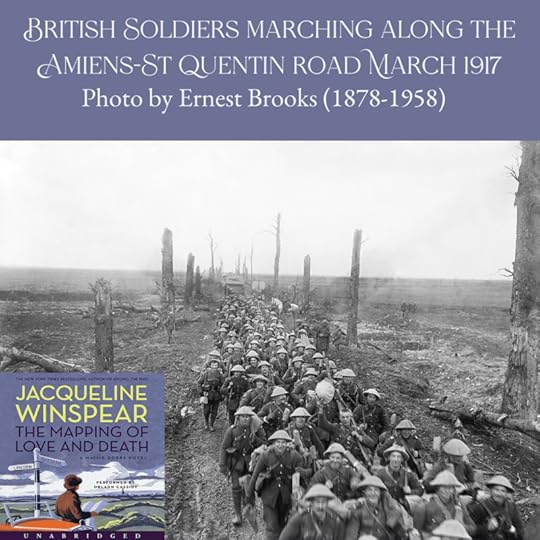 The post THE MAPPING OF LOVE & DEATH ~ MAISIE DOBBS #7 ~ by Jacqueline Winspear appeared first on Cynthia Sally Haggard.
The post THE MAPPING OF LOVE & DEATH ~ MAISIE DOBBS #7 ~ by Jacqueline Winspear appeared first on Cynthia Sally Haggard.
January 1, 2025
Happy 2025!
December 27, 2024
The Tragedy of Montségur, 1244
It started with a murder.
It ended with a massacre.
In 1208, the Papal Legate traveled from Rome to Southern France to meet Raymond VI, Count of Toulouse, the powerful ruler of the area. His purpose, presumably, was to request that Count Raymond stop abetting the Cathars. Unfortunately, he seems to have overstepped his brief, and excommunicated the Count. Naturally, Raymond was furious, and in return, threatened violence. Unsurprisingly, this Papal Legate was murdered shortly thereafter, on his return to Rome.
So, who were the Cathars? And why did they upset the Pope so much?
Modern scholars are somewhat skeptical of their existence. But it is safe to say, that many people – peasants and nobles – who lived in the south of France held beliefs that the Catholic Church frowned upon. One was their belief in two gods – one good, the other evil. Then there was the Endura, the practice of fasting to hasten the onset of death. Perhaps, most dangerous of all, the Cathar religious practices involved a horizontal structure in which people could perform their own rites without the need of bishops, deacons, or church authorities dictating to them what they could do. The Catholic Church did not like this at all.
As with so much else, greed played a role in this sorry story. When Pope Innocent III heard of the murder, he launched a cruscade against the Cathars, pitting the French nobles of Northern France against those of Southern France. The Pope sweetened the deal by declaring that those who vanquished the Cathars would be given the confiscated land of the Cathars and their supporters.
Perhaps I should mention here that at this point in French history, the King of France actually ruled over very little of France. He ruled over the Ile-de France, where Paris sits. But he did not rule over the Channel Islands, the Pale of Calais, or Normandy, Anjou, Maine, Touraine, Poitou, or Aquitaine. These lands were held by the King of England.
Or to put it shortly, the King of England ruled over vast amounts of France, while the King of France just had a teeny-tiny kingdom around Paris.
And so, it is not surprising that the King of France and his nobles would be interested in a land grab in the southern part of France.
More than thirty years later, on 16 March 1244, after the Catholics captured the fortress of Montségur, the Cathars were lead down the mountainside singing, before they walked into the waiting flames.
The Catholics seemed to have won.
But when I traveled to Montségur in the summer of 2010, I found the local people very eager to talk about the Cathars, and proud to keep their memory alive.
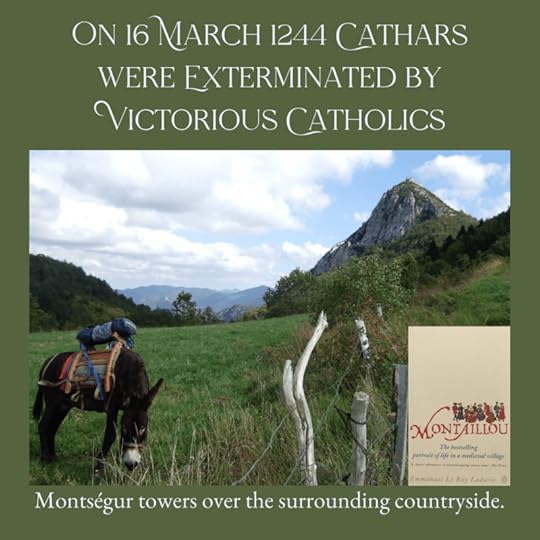 The post The Tragedy of Montségur, 1244 appeared first on Cynthia Sally Haggard.
The post The Tragedy of Montségur, 1244 appeared first on Cynthia Sally Haggard.
December 20, 2024
Adventures with Cecylee Part IV ~ Different Clocks
My first novel Thwarted Queen is a fictionalized autobiography told mostly in the voice of Lady Cecylee Neville, the youngest daughter of Ralph, Earl of Westmorland and his second wife Countess Joan.
We know only two facts about Cecylee’s youth. The first is that she was born in May 1415. The second is that on 18 October 1424, she was betrothed to Richard Duke of York.
This was a splendid match as, upon receiving his inheritance, Richard would be the richest peer in the realm. He was also the closest male relative of the King of England, and so was Heir Presumptive to the throne of England.
But this was an arranged marriage, so how did Cecylee herself feel about it? As historical records about medieval women are generally scant, it is no surprise that there is no evidence about Cecylee’s feelings towards Richard. However, from reading around my subject I was able to glean that Cecylee was willful (she called herself Queen by Right after her husband’s death) and that she had Richard wrapped around her little finger (he made great efforts to make her comfortable in his various residences, as well as on board the ships they took between England and France and England and Ireland.)
So I created characters who fit into this meager amount of evidence. The Cecylee who inhabits the pages of my novel starts out as a bubbly, mischievous, quick-silver girl. Richard, who is extremely intelligent, nevertheless runs at a slower pace. This difference in time-settings causes problems in their relationship, for while Cecylee dazzles Richard, he doesn’t interest her.
As this was an arranged marriage, neither Cecylee nor Richard had any choice in this matter. But there are many things that cause immediate sympathy between people, or not. Smell is a powerful element that can control how comfortable people feel with each other. But timing is another one. You may have noticed that some people are set on fast, while others are set on slow. It is my contention as a former cognitive scientist, that these subtle differences can make or break a relationship. Two people with a similar clock setting will have an immediate sympathy, that two people with disparate settings will not. In Thwarted Queen, Cecylee is set on fast while Richard is set on slow and this causes continual friction in their relationship. When Cecylee meets handsome archer Blaybourne, one of the things that draws her to him, is that he is as fast as she is.
Of course the heartbreak that happens in Thwarted Queen is that Cecylee has to choose between her lover and her children. This means that she has to return to her marriage and act as if nothing happened. Naturally, Richard is very hurt by her behavior, and finds ways to punish her, including making a disastrous match for their eldest daughter Nan. And because Cecylee is so close to the throne, her actions have political ramifications that reverberate down the ages.
If this has whetted your appetite for Thwarted Queen, please click here.
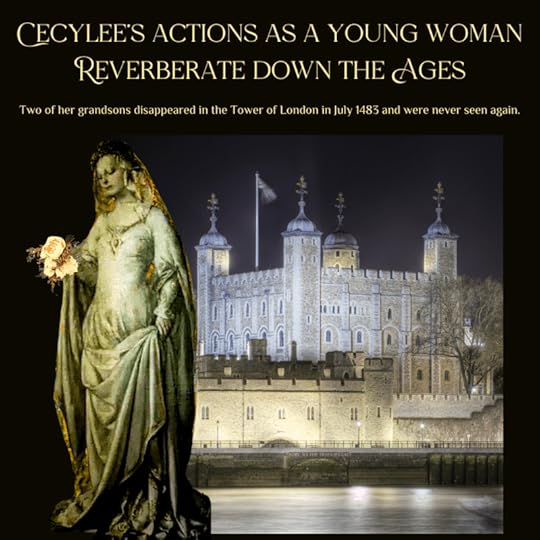 The post Adventures with Cecylee Part IV ~ Different Clocks appeared first on Cynthia Sally Haggard.
The post Adventures with Cecylee Part IV ~ Different Clocks appeared first on Cynthia Sally Haggard.
December 18, 2024
THE ASSASSIN OF VENICE by Alyssa Palombo ~ A Book Review
THE ASSASSIN OF VENICE is a well-crafted tale about a Venetian courtesan called Valentina Ricciardi in 1530s Venice.
In those days, Venice was an rich and imposing republic, powerful enough to do battle with the Turks over who was going to dominate the trade routes in the Eastern Mediterranean and the Black Sea. Another up-and-coming power was Spain, who had already begun its colonization of what is now the United States and South America. Needless to say, spies were part of its armament. But when people think of spies who operated in the past, they still think of young men armed with daggers, their faces hidden by masks, their bodies hidden by cloaks.
But who better to spy than a popular courtesan? Unlike the wives of powerful men who were not allowed to be educated in those days, courtesans were not only gorgeous to look at but were also educated, well able to provide that intellectual firepower that was so stimulating to the élite, who enjoyed talking about politics and the problems they faced when trying to rise to the top. A clever courtesan could coax all kinds of secrets from these men in the form of pillow talk, when their guard was down.
But author Alyssa Palombo has pushed this side hustle a bit further. Supposing these women were employed not only as spies by the Venetian state but as assassins also?
And so we have the story of Maria Angelina, a gently-bred young woman, whose entire existence is destroyed one night in 1527, when the armies of the Holy Roman Emperor go on rampage in Rome.
Eighteen-year-old Maria Angelina manages to escaped (dressed as a boy, of course) and falls in with a Spanish solider who teaches her how to protect herself. They travel through Italy to Venice where he leaves her at a convent, the only respectable option for a young woman in her circumstances.
But Maria Angelina has no intention of spending the rest of her life behind walls. Before night has fallen, she has already escaped and made her way to a brothel in the Piazza di San Marco, where she learns her trade. Once she has made enough to set up on her own, she leaves. The Madam of the brothel makes her change her name – saying that Maria Angelina makes her sound like a nun – and so Valentina Ricciardi, fascinating courtesan is born.
And so when Valentina is ordered by a powerful member of the Council of Ten to murder the man she loves, or her daughter will be killed in his stead, Valentina, who has already lost everything she had once, fights back.
I think most people are going to enjoy the ending of this novel. Five Stars.
 The post THE ASSASSIN OF VENICE by Alyssa Palombo ~ A Book Review appeared first on Cynthia Sally Haggard.
The post THE ASSASSIN OF VENICE by Alyssa Palombo ~ A Book Review appeared first on Cynthia Sally Haggard.
December 13, 2024
Adventures in Provence 2010
For an important birthday, I persuaded my husband to take me to Provence. I had never been to Southern France, while my husband’s family on his father’s side hails from the tiny village of Courbessac near Nîmes.
I consulted a favorite coffee table book The Most Beautiful Villages of Provence, and that is how we decided to make our base at Fox-Amphoux in the Département du Var.
Fox-Amphoux is a charming village perché, meaning that it is literally perched on a rocky outcrop, often fortified and dates from the Middle Ages. From there, we visited The Promenade des Anglais in Nice, popular with British tourists in the 19th century, the Chateau d’Entrecasteaux, where Madame du Sévigné’s daughter lived (she was the recipient of most of her mother’s letters about court gossip) and Grasse, the Perfume Capital.
Everything was going wonderfully well, until we visited the Palais des Papes in Avignon – the seat of the Catholic Church during the 14th century – where I had a very strange turn.
Perhaps it was the description of the feasts held there during the elections of various popes. At one such feast, 96 thousand eggs were used to prepare the food. Now, as everyone who knows me well realizes, I have a sensitive stomach. If anyone is going to feel queasy, it will be me. But it was more than the stomach-churning amount of food. For it suddenly occurred to me that while all these men were celebrating the elevation of the new pope, everyone else outside this gilded cage of a palace was malnourished, half-starving, not getting enough to eat.
And suddenly, I needed to leave.
I don’t know how to explain this other than to say that the dark recesses of this palace, it gold bars hidden in boxes under the floor, its too-obvious power, oozed evil. I couldn’t leave fast enough, my bewildered husband running after me and asking what was the matter.
Once I’d calmed down and explained, he understood what I meant. But I don’t think I will be visiting that Papal Palace at Avignon ever again.
 The post Adventures in Provence 2010 appeared first on Cynthia Sally Haggard.
The post Adventures in Provence 2010 appeared first on Cynthia Sally Haggard.
December 11, 2024
TO THE SUN by Octavia Randolph ~ Circle of Ceridwen #11
This volume has two very different threads.
One is an adventure story about a group of Svaer (Swedes) and a group of Gotlanders who somehow manage to sail into the Gulf of Finland, through the marshy swamps of what is now St Petersburg, into Lake Ladoga before heading south to Novgorod, and across the snow and ice to Kiev, where they pick up the treacherous Dnieper River which takes them to the Black Sea and on their way to Mikligarðr, the glorious city we now know as Istanbul. This manuscript must have been written after the start of the war between Vladimir Putin and Ukraine, and I read it with that in mind. It was so poignant to wander around these lands and experience how they must have been in the 990s via Ms. Randolph’s marvelous descriptions.
The other story thread has to do with the young people we have come to know ever since Tindr, the fifth volume of this series. Edwin of Kilton still cannot catch a break, and what he wants most of all – a suitable wife – still eludes him. Hrald, the young Jarl of Four Stones, is wracked with guilt about his forbidden love for his first wife Dagmar, when he must pretend that all is well with his marriage to his second wife Pega of Mercia.
And this brings me to the best part of the book. For with the first half taken up with the adventure story that too-rapidly pivots to the trials and tribulations of the sons and daughters of Ceridwen, Sidroc, and Lady Edith, the ending is an absolute gob-smack. I have complained often about how nothing much happens in too many of Ms. Randolphs recent volumes that make up The Circle of Ceridwen series. But the ending of To The Sun is an absolute shocker I did not see coming.
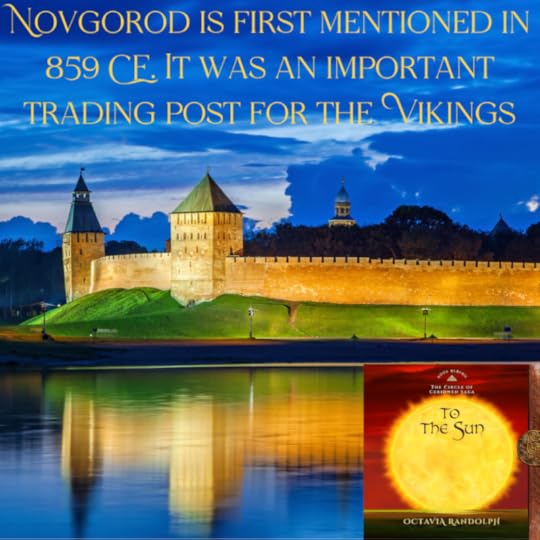 The post TO THE SUN by Octavia Randolph ~ Circle of Ceridwen #11 appeared first on Cynthia Sally Haggard.
The post TO THE SUN by Octavia Randolph ~ Circle of Ceridwen #11 appeared first on Cynthia Sally Haggard.
December 6, 2024
Adventures in Paris in 2010
In 2010, ,my husband and I spent several months in Paris. We rented a top-floor apartment on the Rue des Rosiers in the Marais district of Paris. Every morning for six weeks, I would get up early, taking the Rue Vieille du Temple, the Pont Louis-Philippe, the Pont Saint-Louis, and the Rue du Cloître Notre Dame, before drifting left towards the Pont au Double right past the great western doors of Notre Dame as the bells chimed out eight o’ clock in the morning. I completed my journey by crossing the Pont au Double, through the Rues Lagrange, Fouarre, and Dante, onto the Boulevards Saint Germain and St Michel, onto the Rue Racine, then through the Jardins du Luxembourg to the Alliance Française which awaited me on the Boulevard Raspail.
It had been a long-standing wish of mine to go to Paris to perfect my French. I had had this dream ever since I fell in love with the beautiful and elegant French Language at High School at the age of sixteen. I loved it so much, I persuaded a French teacher to give me extra lessons in speaking French, for a year after O Levels. I acquired a French penpal. Then I met the man who was to become my first husband at a concert, and abandoned my plans to live in Paris and speak French, going to the United States instead.
So it was over thirty years later, as I approached my fiftieth birthday, that I had this opportunity to live in Paris and study French. I learned how tiny the ancient part of the city of Paris is. I saw that Paris has wonderful skies. And I discovered that the French have a taste for their “spectacles.” My husband and I were walking over one of those romantic Parisian bridges when we saw a man with an upside-down umbrella, various plastic bottles filled with water and a pump. There, on the street, in the last light of the sun, he had constructed a fountain inside an umbrella! I remember being stunned as something like that would never have occurred to me. But those of you who watched the Paris Olympics now know how spectacularly inventive the French can be !
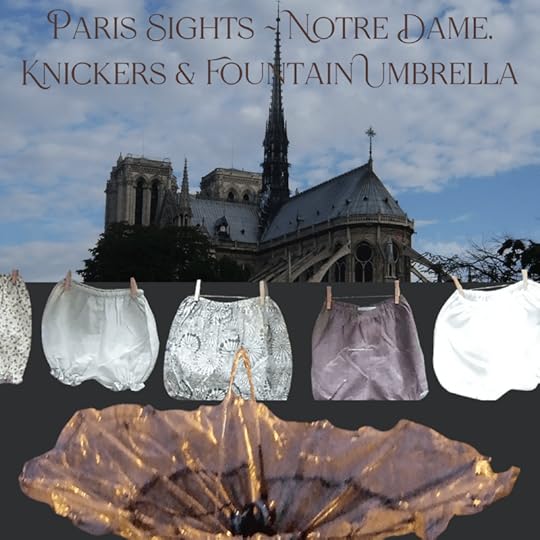 The post Adventures in Paris in 2010 appeared first on Cynthia Sally Haggard.
The post Adventures in Paris in 2010 appeared first on Cynthia Sally Haggard.
December 4, 2024
WATER BORNE ~ CERIDWEN #10 ~ by Octavia Randolph
Water Borne has such a poetic feel to it that it seems a shame that I’m going to start this book review by criticizing it. But this title doesn’t, in my humble opinion, really tell you what this novel is about. Yes, the piece starts with Lady Dwynwen pouring water from a silver jug. Yes, Edwin of Kilton does spend some time on the sea. But even so, I don’t think this title gives you enough of a flavor of what really happens in this volume.
I really think that matters could have been improved if this novel had been titled The Missteps and Misfortunes of Lord Edwin of Kilton. For poor Edwin cannot catch a break in this volume.
Naturally, his troubles start with Lady Dwynwen. Having traipsed all the way to Wales (at least a 50-mile journey over rutted roads), the lady refuses to marry him. Instead, she persuades him to take her back to Kilton so that she could see his home and then make a decision.
As soon as her gaze falls on his elder brother Ceric she changes her mind.
“I will not leave you,” she says over and over again to him, as he sits bemused before her. For Ceric is fragile, having just returned from his sojourn in the forests of Kilton, where he has been living for the past year. He would have died had it not been for the supplies that Worr sent him. And he is still shell-shocked over the death of his intended bride Ashild, because he was responsible for her death. Believing that he saw a Viking warrior before him, he threw a spear which pierced her heart. It was only as he took the speak out that he realized that the Viking was actually Ashild herself. This is the worst thing that could have possibly have happened to Ceric, for he loved Ashild dearly.
But that night, Lady Dwynwen appears at his door in her nightgown. Ceric is unable to resist, and so, of course they have to marry, which they do the very next day.
Everyone is delighted, that Ceric, who has suffered so much in the past year, has finally found happiness. All, except for Edwin, who is in shock. How can that child-like girl have spurned him so completely? Why did she choose Ceric? Edwin cannot understand what happened. She has slipped through his fingers like an eel, before he had a chance to get acquainted.
And now he must go to the trouble and expense of acquiring another bride. So when a letter from King Alfred arrives, inviting him to court, Edwin is only too eager to go. But it turns out that the bride Alfred has in mind is Ealhswith, daughter of Sidroc the Dane. Edwin is appalled. For Sidroc murdered Edwin’s father Godwin. And so he refuses the King’s offer point blank.
Disconsolate, he wanders the halls of the King’s palace, spotting a beautiful, dark-haired woman of noble aspect. He inquires who she is, only to be told that she is Dagmar, Hrald of Four Stone’s first wife, whom he divorced when he found her with another man.
And so when Raedwulf proposes that Edwin travel all the way to Frisia, to the mouth of the Rhine river to negotiate a match with one of the local nobleman’s daughters, Edwin is desperate to go. But when he arrives, the nobleman has just died and the household is in mourning. As it seems the new count is not likely to do anything for his sisters, Edwin’s hopes are again dashed.
And that is how he makes the decision to visit his mother Ceridwen, who is now living happily with his nemesis Sidroc at the Hall of Tyr on Gotland. Of course, things are very tense, but I won’t say more so as not to spoil the ending for those of you who have not read this book.
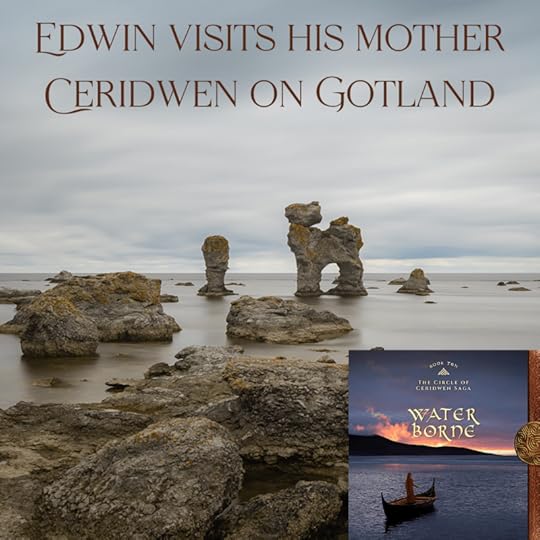 The post WATER BORNE ~ CERIDWEN #10 ~ by Octavia Randolph appeared first on Cynthia Sally Haggard.
The post WATER BORNE ~ CERIDWEN #10 ~ by Octavia Randolph appeared first on Cynthia Sally Haggard.
Cynthia Sally's Blog
- Cynthia Sally Haggard's profile
- 129 followers


 The post
The post 
